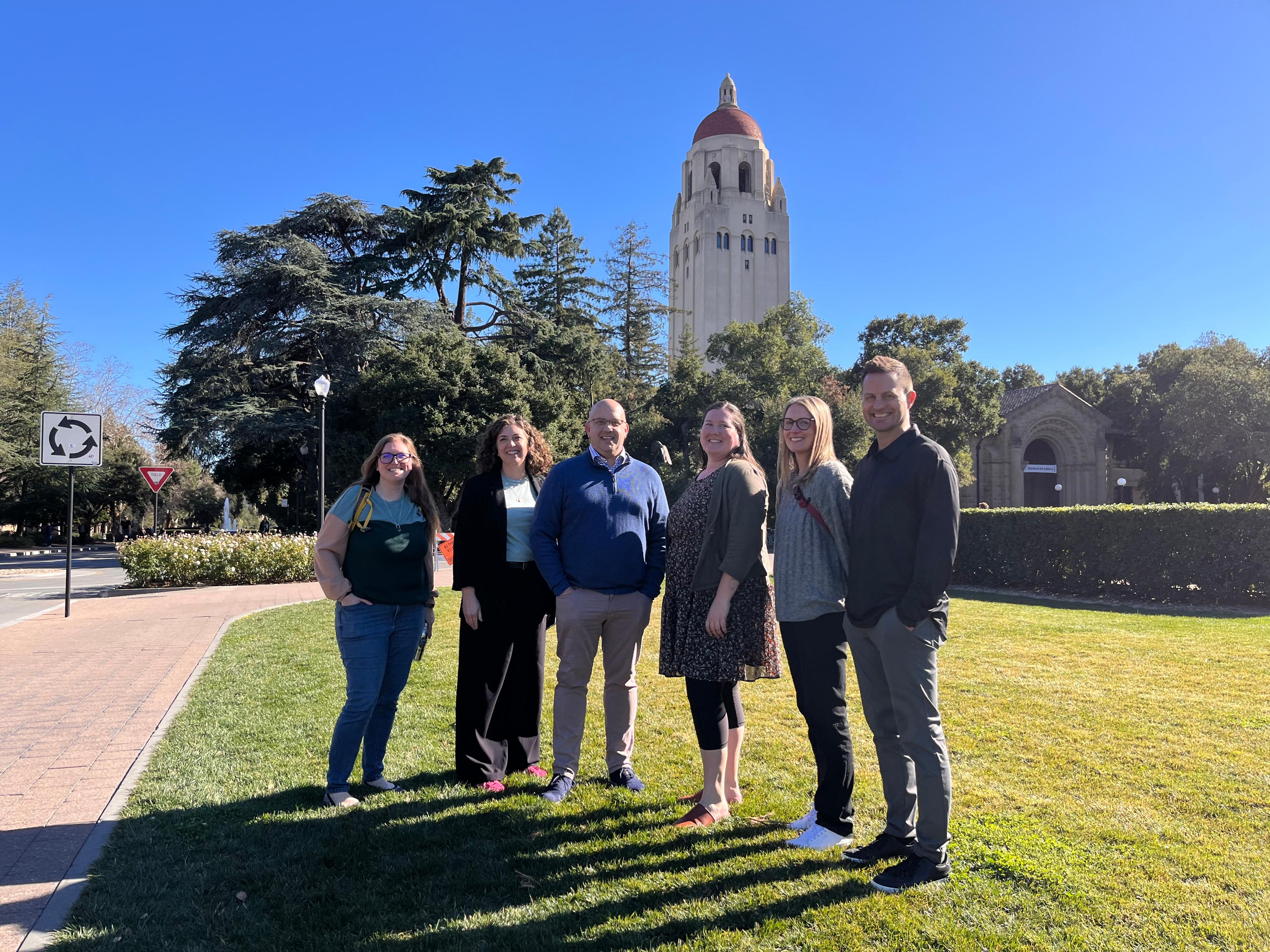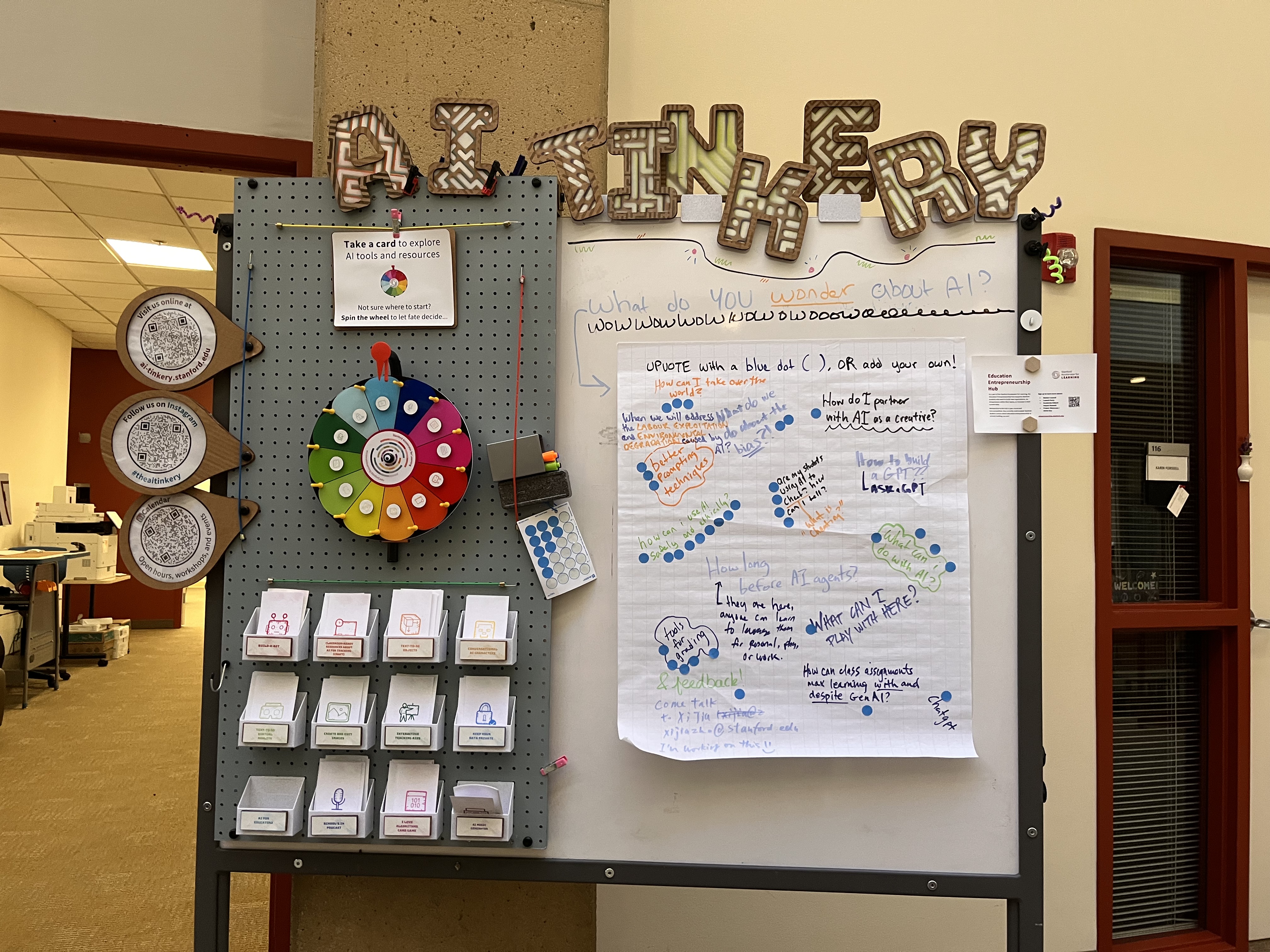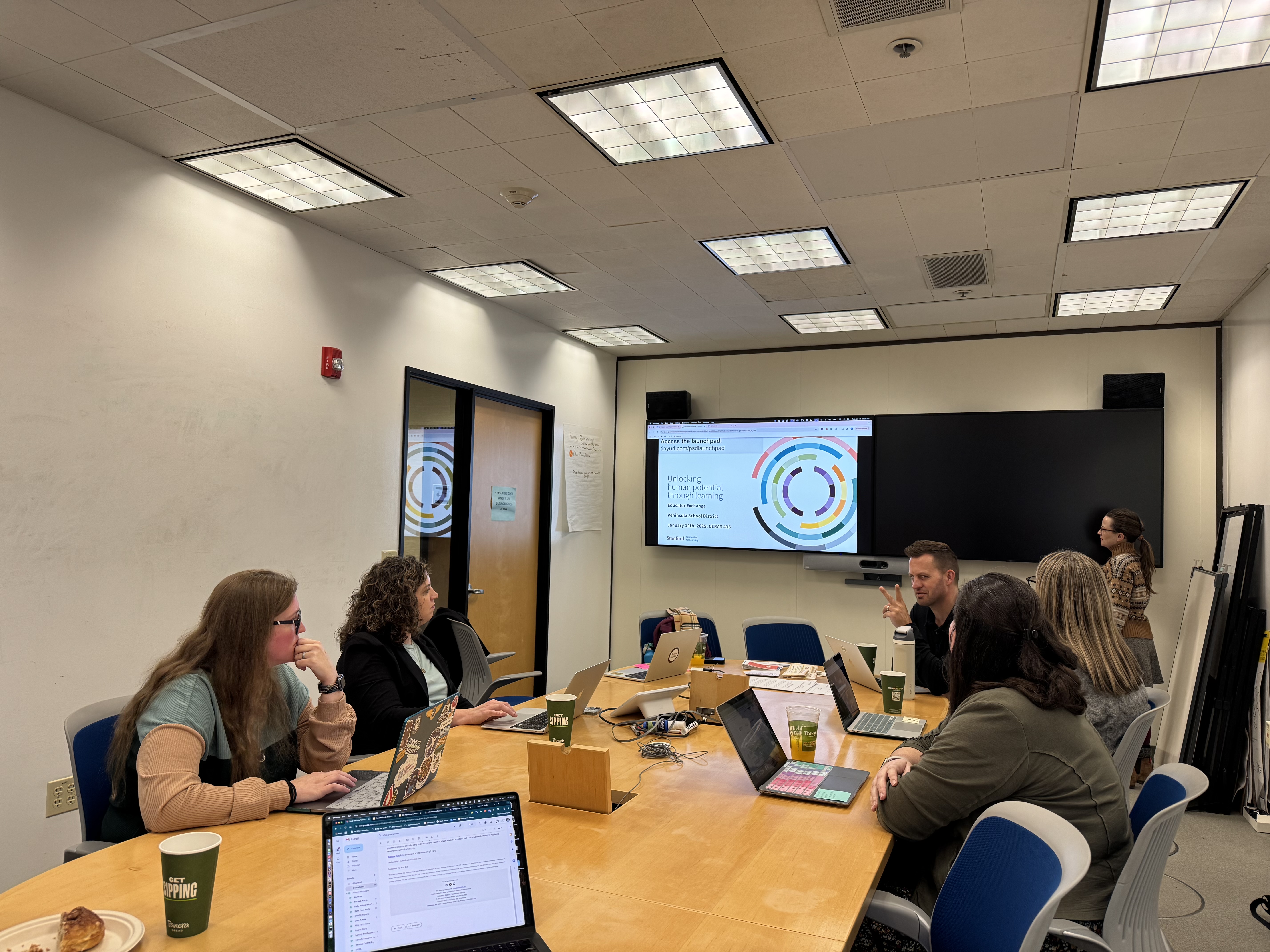Visiting Stanford AI Tinkery Gives Educators Deeper Understanding and Insights into AI Integration

I wondered if a place such as Stanford would already have all the magic ideas and solutions. They're working at it and starting just as we are, which feels good in a way. We are all searching for answers and the first step is to try. - Justin Towner
On Tuesday, January 14, 2025, a group of 6 teachers and district staff (Abbie Kiffin, Julie Bruey, Justin Towner, Mel Benner, Natalie Boyle & Kris Hagel) visited the Stanford AI Tinkery to learn how the Stanford Accelerator for Learning is sharing insights on AI in education.
The AI Tinkery

The Tinkery space offers resources, tools, activities, and books for students at the Graduate School of Education to explore both the potential and concerns around implementing AI in education. Activities like Build-A-Bot, Keeping Data Private, Image Generation, and Classroom-Ready AI Resources were available outside the main space. Inside, it's designed as a "choose your own adventure" environment, providing access to resources as needed. Visitors could also share questions or concerns.
Inside the Tinkery, computers provided access to tools and resources from Stanford CRAFT. CRAFT resources are created through co-design between Stanford University students and staff, and high school teachers from across the United States. A small library offered books about AI, covering both future possibilities and potential dangers if AI is not implemented thoughtfully in society.
Exploring Resources and Co-Developing Tools
Following the Tinkery visit, the afternoon was dedicated to exploring Stanford resources and collaboratively developing a custom chatbot aligned with the Peninsula School District's Instruction Vision and Initiatives. Led by Jessica Ann and Karin Forssell, the PSD team engaged in activities designed to help district teachers expand their AI skills. These activities began with the "AI or not AI?" activity and progressed to a discussion on "What is AI Literacy?".
I liked the Defining AI Literacy activity. It reminded me of how specific AI definitions might be reviewed/discussed as we come together for AI in PSD, as the definitions are a good starting point. - Justin Towner
The team then explored Task Cards for educators on topics like "Lesson Plans with GenAI", "Digital Media with GenAI", and "Build-a-Bot". The morning session wrapped up with an activity on "Meta-Prompting" and its potential to improve AI chatbot prompts.
Co-creating Resources for PSD Teachers

In the afternoon, the team collaborated to develop a resource for district teachers. After brainstorming ideas, they focused on a chatbot to help teachers enhance lesson plans to better align with the district's Universal Design for Learning (UDL) framework.
The bot development was fascinating to me, as I haven't had a lot of time to customize chat bots. I see the idea of narrowing down a bot to fit a specific goal within education (UDL focus) as something that could be powerful for educators. - Justin Towner
Using the "Build-a-Bot" tool, they refined a system prompt and incorporated knowledge from the district's UDL Big 6 progression documents. Through iterative testing over a couple of hours, they aimed to create a chatbot that acts as an empathetic coach, guiding teachers in applying UDL principles to improve student learning. They developed a working prototype, but further refinement is needed before deployment to staff.
Visit Reflections
Being a part of this team has given me the opportunity to better understand how AI programs and tools work and have been tailored to the specific environment for use. With that understanding, I am better able to use the tools myself to get the desired output. I also feel more comfortable sharing these tools with others, especially those who may be hesitant to use AI because they don't know how it works. - Abbie Kiffin
This visit allowed experienced AI teachers to consider future steps for AI implementation. It provided an opportunity to explore pushing AI boundaries productively while also ensuring foundational resources for teachers new to AI. We thank the Stanford team and anticipate future collaborations.